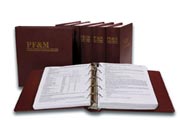 |
 |
 |
|
PF&M at a Glance Condominium coverages Condominiums are an increasingly popular form of real estate ownership. Condominium unit owners have legal title to and ownership of a unit in a building containing many units or in a development made up of many buildings. An additional element of that ownership is a percentage interest in the common property owned jointly by all unit owners. The condominium association bylaws define property owned by the individual unit owner differently from common property owned collectively by all unit owners. The condominium association represents the interests of all unit owners as a group and is responsible for purchasing insurance coverage as outlined in the bylaws, in addition to its other duties and responsibilities. The key to understanding condominiums in general, and their insurance coverage needs in particular, lies in understanding their bylaws. Every condominium association has bylaws that spell out the nature of the property and the ownership that applies to it, as well as defining the relationship between the unit owners and the association. Those bylaws must be reviewed carefully and thoroughly in order to determine the proper insurance coverage. Treating the insurance needs for all condominiums equally and without proper investigation inevitably leads to a variety of problems that can go as far as errors and omissions lawsuits. Condominiums come in many sizes, shapes and forms and have a variety of uses. They can be similar in nature to residential apartment buildings, multi-unit dwellings, a single-family home, or can even be occupied for a variety of commercial uses instead of for residential purposes, or consist of combinations of both residential and commercial occupancies. Some of the more common classifications are:
It is extremely important to understand and be aware of the differences between these categories in order to recognize the differences that each represents and the effect of those differences on the exposures faced by the associations, unit owners and other parties that rent or make use of them. (Agency OnLine subscribers can refer to PF&M Section 132.6-3 for a description of these and other types of condominium classifications.) The Insurance Services Office (ISO) has two commercial forms available and one personal condominium coverage form. CP 00 17-Condominium Association Coverage Form covers the property exposures of condominium associations. CP 00 18-Condominium Commercial Unit-Owners Coverage Form covers the property exposures of a commercial unit owner. CP 00 17-Condominium Association Coverage Form provides property coverage based on the association bylaws and ownership of the property. It covers the common property owned collectively by all unit owners, including the building or buildings and business personal property. If other insurance coverage applies to this property, such as by the individual unit-owner’s coverage, the CP 00 17 is primary and the other coverage is considered excess. This form waives all rights of recovery against individual unit owners. CP 00 18-Condominium Commercial Unit-Owners Coverage Form provides property coverage for the unit owner for the interior portion of the building and not on the building itself. Covered property includes fixtures added and improvements made and owned by the unit owner. If the bylaws require that the association insure certain property, such as fixtures, improvements, appliances and similar or related property, the coverage provided by this form does not apply to that property. Since this form does not cover the building, no coverage is available for newly acquired buildings, but coverage is extended to apply to newly acquired personal property. The form also includes a loss provision that the coverage provided is excess if the same coverage is also provided by the condominium association coverage. It must be noted that this form provides no mortgageholders additional coverage. This could be an important issue if the covered property is subject to a mortgage. HO 00 06-Homeowners 6-Unit-Owners Form is used to insure the owner of a residential condominium unit. It covers fixtures, installations or additions making up part of the building within the unfinished interior surfaces of perimeter walls, floors and ceilings of the individual unit. Coverage applies to original installations or replacements in line with the original condominium plans and specifications or improvements installed at the unit owner’s expense. It differs from the HO 00 04-Homeowners 4-Contents Broad Form because coverage applies on a replacement cost basis. If the insured is responsible for providing building coverage under the bylaws of a condominium or cooperative, coverage is provided under Dwelling Coverage A. This coverage is coordinated with insurance carried by the condominium association for both the building and the common property owned collectively by all unit owners. Please note that this is only a brief overview of the coverages available in this program. The PF&M Analysis from The Rough Notes Company, Inc., contains broader and more thorough discussions of this and other related subjects. Agency OnLine subscribers can refer to PF&M Section 132.4-2, ISO Condominium Coverage Forms Analysis of the Condominium Association Coverage Form CP 00 17 and the Condominium Commercial Unit-Owners Coverage Form CP 00 18, for a detailed evaluation and discussion and additional information on these coverage forms and related issues. * |
|
|||||||||||||
| ||||||||||||||
